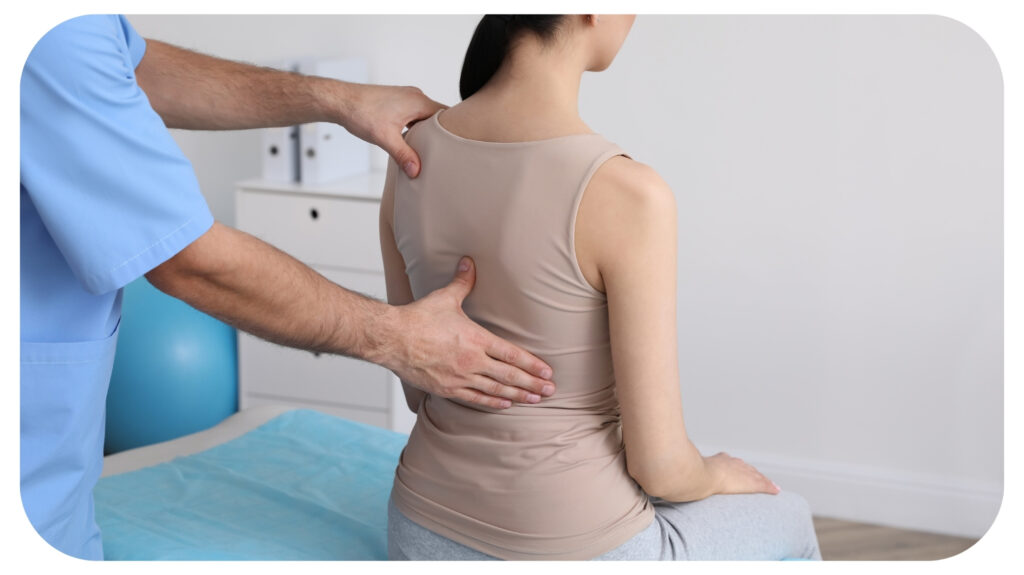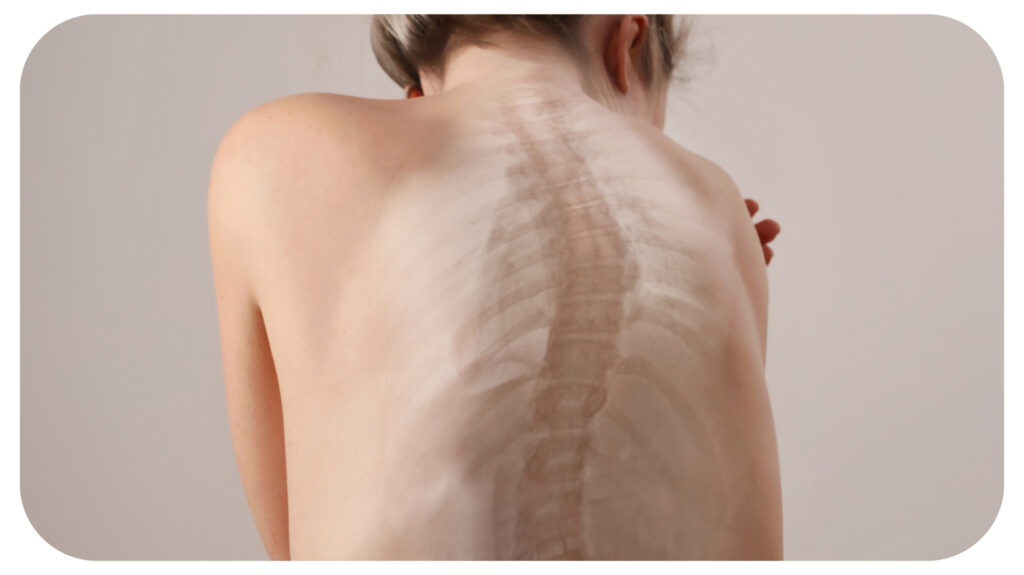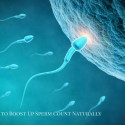Saving the Spine: Understanding Scoliosis’ Root Causes and Best Treatment Approaches

Living with scoliosis presents multifaceted challenges that impact both the physical and emotional well-being of individuals.
Just imagine this: everyday activities such as bending, lifting, and even sitting for long periods can become arduous tasks, as scoliosis can cause discomfort, pain, and limited mobility due to the abnormal curvature of the spine. For some people, the visible physical asymmetry resulting from scoliosis affects the self-esteem and mental well-being, too. It may not be a life-threatening condition, that is true, but its long-term impact to a person’s physical, emotional, and psychological health is detrimental.
In this comprehensive guide, we will delve into the root causes of scoliosis, explore its symptoms, discuss diagnostic methods, and explore scoliosis treatment options in Singapore.
What causes scoliosis?
Scoliosis affects people of all ages, but it is most commonly diagnosed during adolescence. While the exact cause of most cases of scoliosis remains unknown, there are several factors that can contribute to its development. These factors include:
- Idiopathic scoliosis: This is the most common form of scoliosis and has no identifiable cause. It typically develops during adolescence and affects girls more often than boys.
- Congenital scoliosis: This type of scoliosis is present at birth and occurs due to abnormal spinal development in the womb.
- Neuromuscular scoliosis: This form of scoliosis is caused by underlying neuromuscular disorders such as cerebral palsy, muscular dystrophy, or spinal muscular atrophy.
- Degenerative scoliosis: Also known as adult-onset scoliosis, this condition occurs later in life due to the natural degeneration of the spine’s structures.
What are the symptoms of scoliosis?
Identifying the symptoms of scoliosis is crucial for early detection and intervention. Some cases of scoliosis may be asymptomatic, but others may present the following signs:
- Uneven shoulders or waist: A noticeable asymmetry in the shoulders or waistline may indicate the presence of scoliosis.
- Uneven musculature: The muscles on one side of the spine may appear more prominent or developed compared to the other side.
- Back pain: Scoliosis can cause discomfort or pain in the back, particularly in the region of the abnormal curvature.
- Limited mobility: Individuals with scoliosis may experience reduced flexibility and range of motion in their spine.

How is scoliosis diagnosed?
Diagnosing scoliosis involves a combination of physical examinations, medical history evaluations, and imaging tests. During a physical exam, a healthcare professional will evaluate the patient’s posture, mobility, and overall spinal alignment. They may also order X-rays, MRI scans, or CT scans to gain a clearer understanding of the curvature and its severity. This thorough diagnostic process helps determine the appropriate treatment plan tailored to the individual’s specific needs.
What factors should be considered when determining the best treatment approach?
When it comes to treating scoliosis, several factors need to be taken into consideration.
- Age: The age of the individual plays a significant role in determining the best treatment approach. Younger patients, whose bones are still growing, may be recommended non-surgical methods, while older patients may require surgical intervention.
- Severity of the curvature: The degree of spinal curvature is measured using the Cobb angle. Mild cases may be managed with conservative approaches, while more severe cases may require surgery.
- Underlying cause: Identifying the underlying cause of scoliosis is necessary in developing an effective treatment plan. Treatment strategies may vary depending on whether scoliosis is idiopathic, congenital, neuromuscular, or degenerative.
Are there non-surgical treatment options for scoliosis?
Non-surgical treatment options for scoliosis aim to manage pain, prevent further progression of the curvature, and improve overall quality of life. These treatment approaches include:
- Observation: In some cases, especially when scoliosis is mild, regular monitoring and observation may be sufficient without immediate intervention.
- Physical therapy: Targeted exercises and stretches can help improve posture, strengthen the muscles supporting the spine, and alleviate pain.
- Bracing: Custom-made braces are often prescribed for adolescents with moderate scoliosis to prevent further progression of the curvature during growth spurts.
What are the surgical treatment options for scoliosis?
In more severe cases of scoliosis, surgical intervention may be necessary to correct the curvature and stabilize the spine. Surgical treatment options for scoliosis include:
- Spinal fusion: This procedure involves fusing the vertebrae together using bone grafts, rods, screws, or hooks to correct the curvature and prevent further progression.
- Growing rod surgery: This approach is primarily used for children with scoliosis and involves the insertion of expandable rods to guide the growth of the spine and control the progression of the curvature.
- Vertebral body tethering: A newer technique, vertebral body tethering involves attaching a flexible cord to the vertebrae to correct the curvature while allowing for continued growth.
What are some tips for preventing scoliosis?
While not all cases of scoliosis can be prevented, there are certain measures that can help reduce the risk or slow down its progression.
Sitting up straight and avoiding slouching can help promote a healthy spine. Practicing good posture and ergonomic techniques, particularly when sitting or standing for extended periods, can minimize unnecessary strain on your spine and surrounding muscles, potentially reducing the risk of developing postural issues that may contribute to scoliosis.
You should also engage in regular physical activity. It recommended to perform exercises that promote core strength, flexibility, and overall musculoskeletal health to help maintain a strong and balanced posture.
If possible, you should set an appointment for regular scoliosis screenings, especially during adolescence when rapid growth occurs. Early detection and timely intervention can potentially prevent (or at the very least, delay) the progression of spinal curvature through the use of braces or other orthopedic interventions.
Do not forget that maintaining a nutritious diet rich in calcium, vitamin D, and other essential nutrients can be highly beneficial for you! Good bone health can contribute to overall musculoskeletal strength and resilience and reduces the risk of developing conditions that affect spinal alignment.
And lastly, you should avoid habits that may negatively impact musculoskeletal health, such as carrying heavy backpacks, performing improper lifting techniques, and excessive use of high-heeled shoes.
By incorporating these measures into daily routines, you can mitigate certain risk factors associated with scoliosis and promote overall musculoskeletal health. However, you should also remember that while these measures may be beneficial, they may not guarantee the prevention of scoliosis in all cases. Regular consultation with healthcare professionals and adherence to recommended screenings and interventions are still considered the best practices in addressing spinal health comprehensively.
Physioactive
- Camden Medical Centre
- #11-05 Singapore 248649
- https://www.physioactive.sg
- 6235 2647
You may like this
Recommended For You
Hair Loss Treatments in Chatswood
Most Inside
Most Inside offers high-quality recommendations and valuable updates to enhance all aspects of your life, providing premium guidance and enriching experiences.




